Task-based and Magnified Mirror Therapy for Unilateral Spatial Neglect among post-stroke subjects: Study protocol for a randomized controlled trial
- PMID: 38265989
- PMCID: PMC10807845
- DOI: 10.1371/journal.pone.0296276
Task-based and Magnified Mirror Therapy for Unilateral Spatial Neglect among post-stroke subjects: Study protocol for a randomized controlled trial
Abstract
Background: Unilateral spatial neglect (USN) is a commonly occurring neurocognitive disability after a stroke. The neglect may affect the motor recovery of the upper and lower limbs and functional performances. Mirror therapy, a simple and economical approach has the potential to reduce the USN and related impairments.
Aim: The primary objective of this study is to determine the effectiveness of task-based and magnified mirror therapy on the USN and on the motor recovery of the post-stroke subjects. The secondary objective is to investigate the effectiveness of the intervention on the function and disability of the subjects.
Methods: In this randomized controlled, assessor-blinded trial, 86 post-stroke subjects will be recruited from the neuro-rehabilitation laboratory of a rehabilitation institute, located in northern India. The participants,aged20 to 80 years, with 1 to 36 months of stroke onset, hemiparesis, and the USN, will be considered eligible for the study. In addition to the conventional rehabilitation, the experimental group(n = 43) will receive 40 sessions (8 weeks) of Task-based and MAGnified Mirror Therapy for Unilateral Spatial Neglect (T-MAGUSN). The control group (n = 43) will undergo a dose-matched conventional program only. The participants will be assessed at baseline, post-intervention and 4-week follow-up using primary (Line Bisection Test, Letter Cancellation Test, and Fugl-Myer Assessment) and secondary (Catherine Bergego Scale, Berg Balance Scale, Functional Ambulation Classification, Modified Rankin Scale) outcome measures.
Discussion: This proposed study will lead to the development of a novel rehabilitation protocol for the management of USN, aiming to enhance motor and functional recovery. The investigation will consider both the upper and lower limbs for the intervention, reducing the impact of cognitive disability in stroke.
Trial registration: Clinical Trial Registry of India (CTRI) as CTRI/2023/05/053184 (www.ctri.nic.in/Clinicaltrials/pmaindet2.php?trialid=74659).
Copyright: © 2024 Arya et al. This is an open access article distributed under the terms of the Creative Commons Attribution License, which permits unrestricted use, distribution, and reproduction in any medium, provided the original author and source are credited.
Conflict of interest statement
The authors have declared that no competing interests exist.
Figures
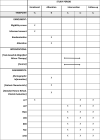
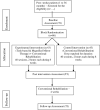

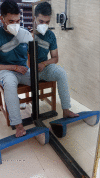
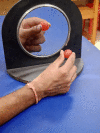
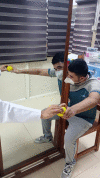
Similar articles
-
Treatment of unilateral spatial neglect after stroke using transcranial direct current stimulation (ELETRON trial): study protocol for a randomized controlled trial.Trials. 2016 Oct 3;17(1):479. doi: 10.1186/s13063-016-1598-4. Trials. 2016. PMID: 27716442 Free PMC article. Clinical Trial.
-
Effect of NEuroplasticity-Principles-based SEnsory-Rehabilitation (NEPSER) on sensori-motor recovery in stroke: study protocol for a randomized controlled trial.Neurol Res Pract. 2021 Feb 4;3(1):8. doi: 10.1186/s42466-021-00108-1. Neurol Res Pract. 2021. PMID: 33536067 Free PMC article.
-
Prism adaptation combined with eye movement training for unilateral spatial neglect after stroke: Study protocol for a single-blind prospective, randomized controlled trial.Front Neurol. 2023 Jan 5;13:1081895. doi: 10.3389/fneur.2022.1081895. eCollection 2022. Front Neurol. 2023. PMID: 36686538 Free PMC article.
-
Effect of Robot-Assisted Training on Unilateral Spatial Neglect After Stroke: Systematic Review and Meta-Analysis of Randomized Controlled Trials.Neurorehabil Neural Repair. 2022 Aug;36(8):545-556. doi: 10.1177/15459683221110894. Epub 2022 Jul 26. Neurorehabil Neural Repair. 2022. PMID: 35880666
-
Does repetitive transcranial magnetic stimulation have a beneficial effect on improving unilateral spatial neglect caused by stroke? A meta-analysis.J Neurol. 2024 Oct;271(10):6494-6507. doi: 10.1007/s00415-024-12612-w. Epub 2024 Aug 28. J Neurol. 2024. PMID: 39196395 Free PMC article.
References
Publication types
MeSH terms
LinkOut - more resources
Full Text Sources
Medical

